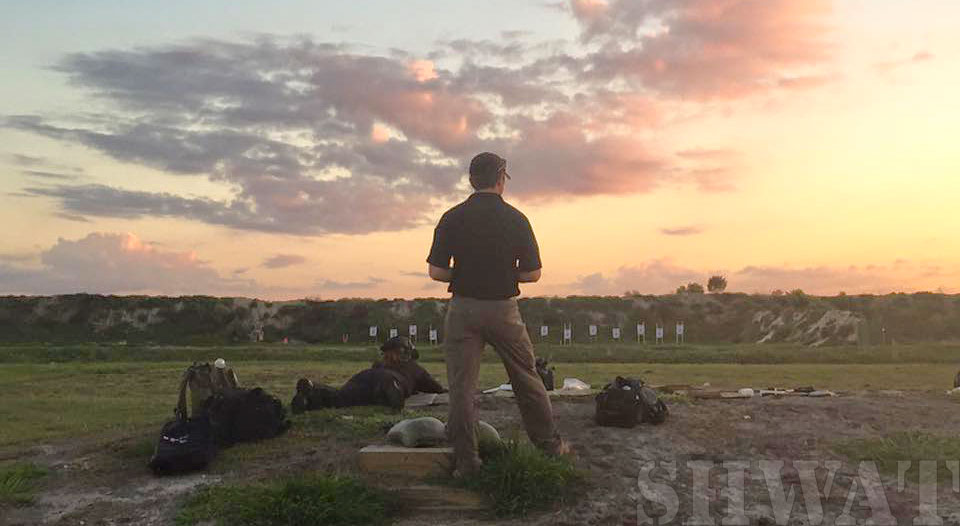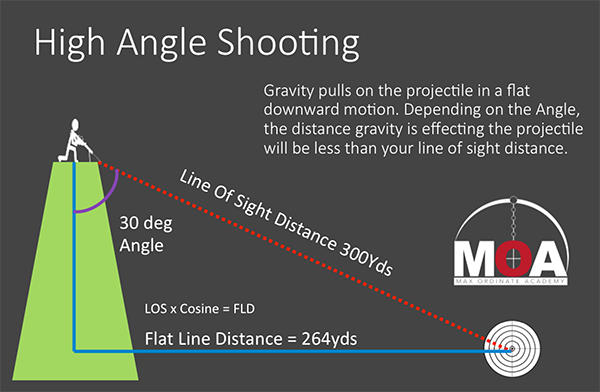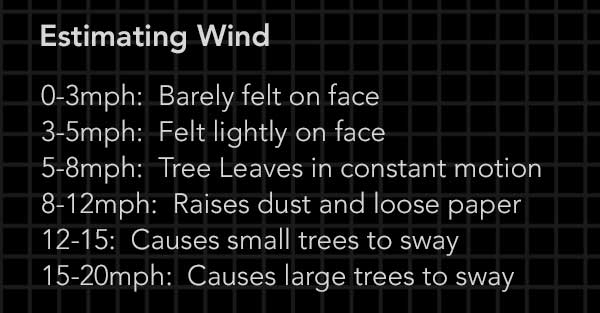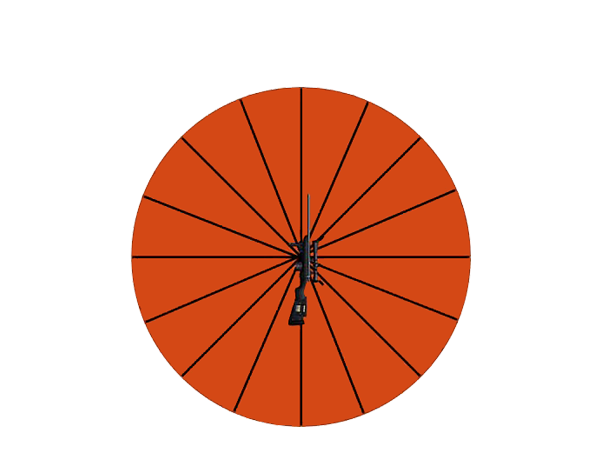Day two’s classroom session opens my eyes to many new ways to approach medium to long range hunting. For most hunters, deer and wild boar hunting is generally done within 100 yards. At times, and depending on one’s geographical location, it can stretch as far as 400 yards or more. With that in mind, I eagerly take notes as Tyler discusses “External Ballistics”. This is the science of the bullet’s motion and action in flight from the instant it leaves the muzzle until it impacts the target. This stuff matters as we shoot further. Learning the effect of gravity and drag on a projectile, about shooting at a moving target and how to use my environment to estimate a wind correction are all things I can apply when hunting. This class is already paying off!

Consider with me the issues of gravity and drag. Imagine a deer standing in a valley at 200 yards. Our shot will at a 30 degree downward angle. Most ballistics calculators will do the math for the shooter, but let’s approach this old school. We have to adjust for a 173 yard shot because otherwise we’ll hit higher than planned and possibly miss. But how do we know this? We simply measure the distance to our target deer with a range finder and multiply it by the shot angle’s cosine. This determines the horizontal distance to the target. Angles can be tricky to guess. If you use an iPhone, simply go to your compass application and swipe to the side to use the angle application. Literally, problem solved. We get an A+ and a clean shot on our trophy deer!

Shooting at a moving target may not be common for most hunters of medium size game, but for those who go wild boar hunting you know the thrill and agony of this scenario. How many times have you seen a YouTube video of a hunter unloading a magazine on a running boar and all you see is dirt flying up behind the pig? Tyler helps me fix this problem and it’s simple science that once deposited in our heads will pay dividends. Hang with me here, it might feel like 7th grade for a moment. Use a ballistic calculator on your smart phone to determine the time of flight in seconds to your target. Easy. Then multiply that by the target’s speed in feet per second. Practically speaking, I often hunt hogs with a 6.8 SPC 128 grain Hornady SST bullet. It takes .27 seconds to hit a hog at 200 yards. If the hog is traveling at 5 feet per second (a 3.5 mph trot), I have to adjust 1.35 feet (which is sixteen inches, or 2.4 mils if you want to dig deeper) in front of where I want to hit before pulling my trigger. The great thing is you can do the entire math at home and print it out for future reference. Too much trouble? Not really, because once you do the math a couple of times you’ll understand how it works and can focus on connecting with that pig when you pull the trigger.
Estimating the wind is as much of an art as science, but it can be the difference between a successful or frustrating hunt. Every year I travel to Indiana for the first week of deer firearm season and the wind is always an issue. Wind gusts up to 25mph are common, so I believe this information will prove valuable to my success on future hunts. I’m still taking notes as Tyler outlines factors to consider when making a wind call: Distance to target; Direction left or right; Velocity of wind and Value of the wind direction. Now a Kestrel weather meter would be ideal, but distance is for your range finder or you with scope reticle to figure out. You already know your left and right. Velocity can be estimated using these indicators.

Lastly, what’s the value of the wind? It simply represents the angle of the wind hitting your target and it’s represented as a fraction. The “Full” value represents wind coming at a 90 degree angle. The value is cut further like a pie into a ¾ value, a “half” value, a ¼ value and “No” value. No value represents wind coming from behind you or directly in front of you. Why is knowing this value important to a hunter shooting at a deer across a 300 yard cornfield with a 18mph wind at “full” value? The math [Range (tenths) X (Wind velocity (mph)/3(.223/5.56 bullet)] = Correction in Mils (Value) tells me to adjust 1.8 Mils with no value adjustment. Not performing this drill ahead of time translates into a missed opportunity. The 3 noted in the equation is specific to the bullet’s diameter. There are different values for larger calibers.

These three keys prove critical once we hit the range with confirmed zeros. The next couple hours are nothing short of an amazing and gratifying shooting experience. With my partner’s assistance, I ring steel and log my DOPE (Data on Previous Engagements) all the way to 1000 meters! That’s 1100 yards! It is surreal to imagine how within 24 hours of touching this new weapon system and caliber, I’d shot steel at 1000 meters. This was a true testament to solid instruction from Tyler and his staff and the outstanding performance from the Desert Tech SRS, US Optics scope and DRT Ammo. I am beyond excited! This “AR Guy” is becoming a “Precision Rifle Guy”!





